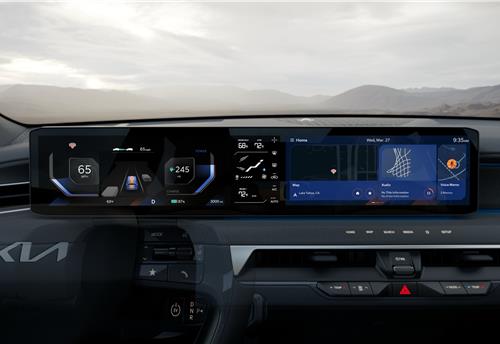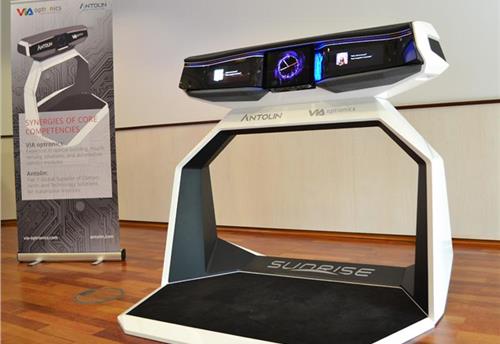Mercedes to replace aluminium pistons with high-tech steel pistons in diesel engines for cars
Mercedes-Benz plans to replace conventional aluminium pistons in passenger car diesel engines with a new high-tech generation of pistons made of steel.
Mercedes-Benz plans to replace conventional aluminium pistons in passenger car diesel engines with a new high-tech generation of pistons made of steel. The carmaker says the advantages they bring, when combined with the innovative Nanoslide cylinder bore coating technology, include even lower fuel consumption and even lower CO2 emissions.
In September 2014, the new high-tech steel pistons will have their world premiere in a standard-production passenger car, in the V6 diesel engine of the E350 BlueTEC. Thanks, amongst other things, to this technical innovation the saloon continues to deliver the same engine output (258bhp), yet only uses around 5.0 litres of diesel fuel per 100 kilometres – the saving achieved through the use of the steel piston is thus around three percent.
Steel pistons are already commonly found in commercial vehicle engines, where they are combined with heavy cast-iron crankcases, while aluminium pistons have over the years gradually become the norm for passenger car diesel engines. The high-tech steel pistons that Mercedes-Benz has now developed completely from scratch harmonise perfectly with the state-of-the-art and much lighter aluminium engine housings and the multiple-award-winning Nanoslide cylinder bore coating technology also developed by the German carmaker.
EXPLOITING MATERIAL ADVANTAGES
Steel and aluminium have significantly different characteristics: steel expands less than aluminium when hot, conducts heat less well and is simply heavier. At first glance, this would seem to make the combination of aluminium housing and steel pistons tricky. Notwithstanding this situation, company engineers discovered opportunities for the future by using the apparent differences between the properties of the respective materials to their best advantage.
They exploited the fact that a steel piston only expands with heat to about a quarter of the extent of its aluminium equivalent to fit the steel piston more tightly within the aluminium housing, with the effect that it sits very snugly in the cylinder bore. However, as the temperature rises during operation of the engine, the aluminium housing expands more than the steel piston – and the result is greater tolerance of the piston within the cylinder and thus less friction. As the piston/cylinder assembly alone causes between 40 and 50 percent of the mechanical friction, the potential for efficiency revealed here was significant.
The steel pistons used up until this point were, however, little suited for the combination with engine housings made of aluminium. So instead, Mercedes‑Benz had to redesign the piston. The modern versions of the steel pistons that will now be fitted for the first time as standard in the V6 diesel on board the E350 BlueTEC, within an aluminium crankcase with Nanoslide cylinder bore coating technology, are high-tech components forged out of high-quality, high-strength steel. The challenge for the piston supplier is considerable, since the manufacturing process for the new, high-strength steels is similarly complex.
But the effort is worthwhile, as the higher strength of the modern steel allows for a more compact piston design, which more or less compensates for the fact that the material is around three times as dense. Indeed, the innovative steel pistons that will in future be working away within the six combustion chambers of the Swabian V6 diesel engine are as much as 13 millimetres lower than the aluminium equivalents used until now (aluminium pistons in the V6 diesel approx. 71.6 mm high, steel pistons only 58.6 millimetres). Thanks to this changed geometry and intelligent design, the weight of the unit comprising piston, gudgeon pin and piston rings is on a par with that of the version with aluminium piston. Mercedes-Benz has thus been able to compensate almost completely for the weight disadvantage of steel and even to ensure reserves of strength for peak pressures that may become even higher in future.
HIGH EFFICIENCY, LOW CONSUMPTION
The use of steel pistons has enabled engineers to improve the level of efficiency, since the lower thermal conductivity of steel compared with aluminium means that higher temperatures are reached within the combustion chamber. The ignition quality thus increases, while the combustion duration is reduced. The result is lower fuel consumption and pollutant emissions. Mercedes-Benz took account of the lower thermal conductivity of steel with design modifications such as modified cooling ducts in the pistons.
Experience has shown that the innovative steel pistons optimise thermodynamic performance and, at the same time, reduce friction significantly. Furthermore, measurements showed that in the lower and middle speed ranges, so important in everyday driving, significant consumption benefits can be achieved.
ADVANTAGE STEEL
As far as the future is concerned, the engine designers at Mercedes-Benz see further possible advantages in the use of the high-tech steel pistons:
- Steel not only allows the piston to be made smaller, but also offers greater reserves for coping with mechanical stresses. This is particularly advantageous for further downsizing concepts.
- Since steel pistons are stronger than aluminium ones, a diesel engine fitted with them can operate at higher temperatures and thus achieve a higher level of thermodynamic efficiency.
- Since the lower thermal expansion of steel pistons compared with aluminium also means that the engine designers are able to reduce the gap between the cylinder wall and the piston as far as the first piston ring, it has been possible to reduce both pollutants and untreated emissions.
Photograph: Aluminium piston (left) and the new steel piston (right).
RELATED ARTICLES
Marelli Talbros Chassis Systems wins Rs 1,000 crore business from European OEM
The order, to be executed over an eight-year period, is for the supply suspension arms tailored for both conventional in...
Kia launches customised NBA display themes for North American market
Display Themes is a customised service that supports a personalised vehicle experience, allowing users to customise the ...
Antolin and VIA Optronics unveil versatile vehicle cockpit concept
The Sunrise vehicle concept cockpit, which is engineered for seamless transitions between manual and autonomous driving ...





 12 Aug 2014
12 Aug 2014
 7124 Views
7124 Views





 Autocar Pro News Desk
Autocar Pro News Desk




